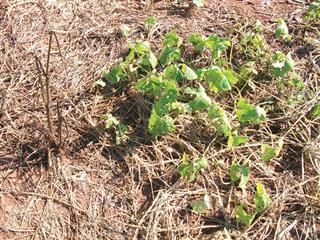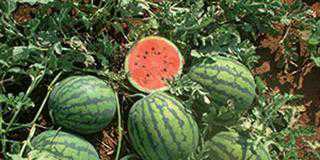
Crop chemicals are expensive and if herbicide spraying isn’t optimised, you get poor value for money. Ineffective application can cause big losses for farmers, but there are a few ways to improve application.
Nozzle type
Firstly, ensure nozzles are correct for the specific purpose. Many farmers use one nozzle for all purposes, but this convenience may come at a heavy cost.
Fan nozzles are used for herbicide applications. These should be tapered jet nozzles to ensure lower delivery at a third of each outer edge.
This makes provision for overlap with the nozzle alongside. If you’re using “E” type nozzles on a boom that delivers a uniform amount along each nozzle’s spray width, and the nozzles cross, you could apply a double dose of spray.
The tapered nozzle is practical as it allows for one third overlap of each nozzle on the boom. When we’re slightly out, there isn’t such a profound difference in application as to be either harmful by overdose or dramatically ineffective with a slightly lower dose.
Adjust the boom height to the right level for correct overlap.
We don’t always use a flat nozzle for all herbicide applications. When using products such as glyphosate or paraquat on well-grown weeds, the product will be more effective when a larger percentage of the leaf area is wet. Don’t apply so much that you have runoff. That would mean you’re applying a lower rate of active ingredient per hectare, as these products don’t work through the soil.
Correct Dosage
Herbicide product labels aren’t always very clear on the best dosage for effective weed control. Experience counts a lot but as a rule of thumb I find that with glyphosate, you will be close to the mark if you use a 2% solution and wet the leaves just to the point before runoff. Use the same method with paraquat, but with a 1% solution.
When weeds are younger and shorter, a much smaller volume of solution per hectare is needed than when weeds are older and larger. Tractor speed can be adjusted according to the required volume. With paraquat, good control can be achieved at 500ml/ha when the weeds have just emerged, but this may need to increase to up to 3l/ha depending on weed volume.
Very little water per hectare is needed with glyphosate as it’s systemic, but a little more water won’t do any harm provided that it stays on the plants. Weeds that are already flowering are more resistant to herbicides, and certain weeds are more resistant to certain products. Some products provide a list of more resistant weeds and suggested rates.
Glyphosate and paraquat have little effect on wandering jew (Commelina benghalensis) and morning glory (Ipomoea purpurea). Yellow nutsedge (Cyperus esculentus, or uintjies) is better controlled by a second application about four days after the first.
To eliminate the stubborn weeds that are left over, apply a follow up spray with a knapsack sprayer when most of the weeds have died down.
Water quality
- Water quality has a bearing on the efficacy of the herbicide applied.
- Never use muddy water to fill the tank, as the clay particles in the water render many herbicides impotent.
- Water’s mineral content will also influence the herbicide’s active ingredients.
- Apart from wetting agents, adjuvants are available to neutralise the effect of these minerals so that the product won’t be as affected by poorer quality water.
- Water pH is also important. It’s worthwhile to get all the relevant information from your chemical representative to get the most benefit from the application and the best value for your money.












